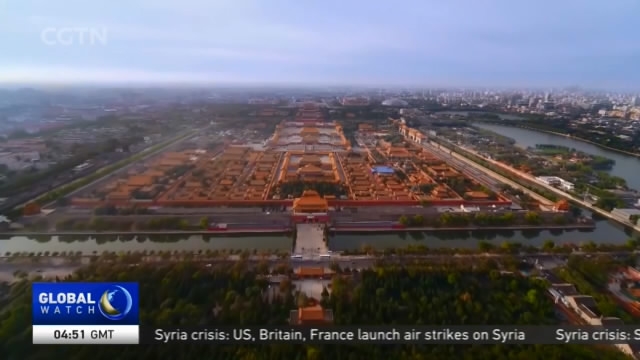
13:38, 14-Apr-2018
Heritage Preservation: Central Axis of Beijing prepares to apply for UNESCO recognition

Beijing old city was constructed symmetrically with the axis passing through the center of the Forbidden City. Famous sites built in the Ming, Qing and even Yuan dynasties cluster along the line. Efforts are being made to help the central axis apply for the title of UNESCO World Cultural Heritage site. Now let's take a look at the central axis' significance.
The Imperial Divine Temple is one of the remarkable buildings along the Central Axis of Beijing. It is where the imperial families worshipped the God of Land.
To better protect the historical relics, recent efforts have removed 5 residential buildings from the area. More measures will be carried out following the relocation, including getting rid of possible safety hazards.
LIU JINGDI, VICE DIRECTOR HOUSING & URBAN DEV'T COMMISSION, DONGCHENG DISTRICT "The central axis heritage protection project is on the top agenda of our urban development. This year, 13 historical sites along the line will be cleared of residential constructions. In the 3 years to come, 47 sites along the axis will be preserved. "
The Central Axis is the best preserved core area of the old city of Beijing. It is 7.8 kilometers long starting in the south of the city at Yongding Gate. It then runs across Zhengyang Gate, Tian'an men square, the Forbidden City, and Jingshan Hill, finally ending with the Drum Tower and Bell Tower in the north.
The Central Axis of Beijing has its dates back to the planning and design of Dadu City in the Yuan Dynasty. SW CGTN.

SITEMAP
Copyright © 2018 CGTN. Beijing ICP prepared NO.16065310-3
Copyright © 2018 CGTN. Beijing ICP prepared NO.16065310-3